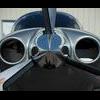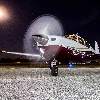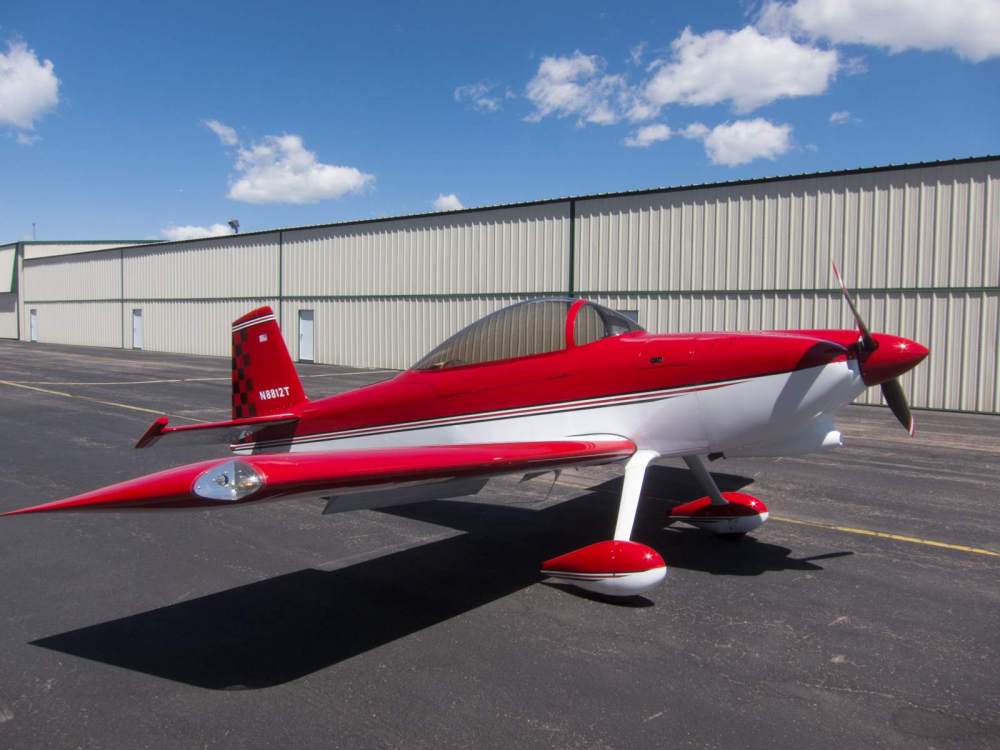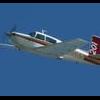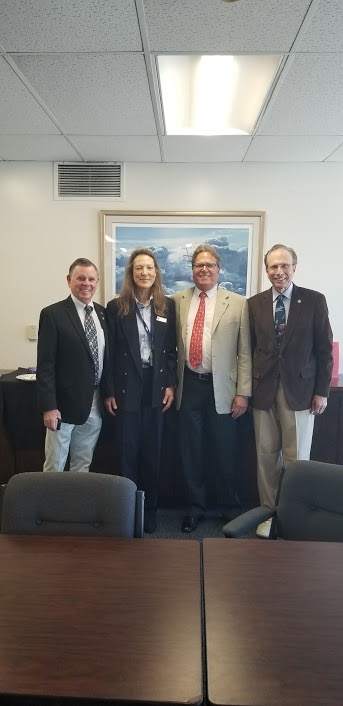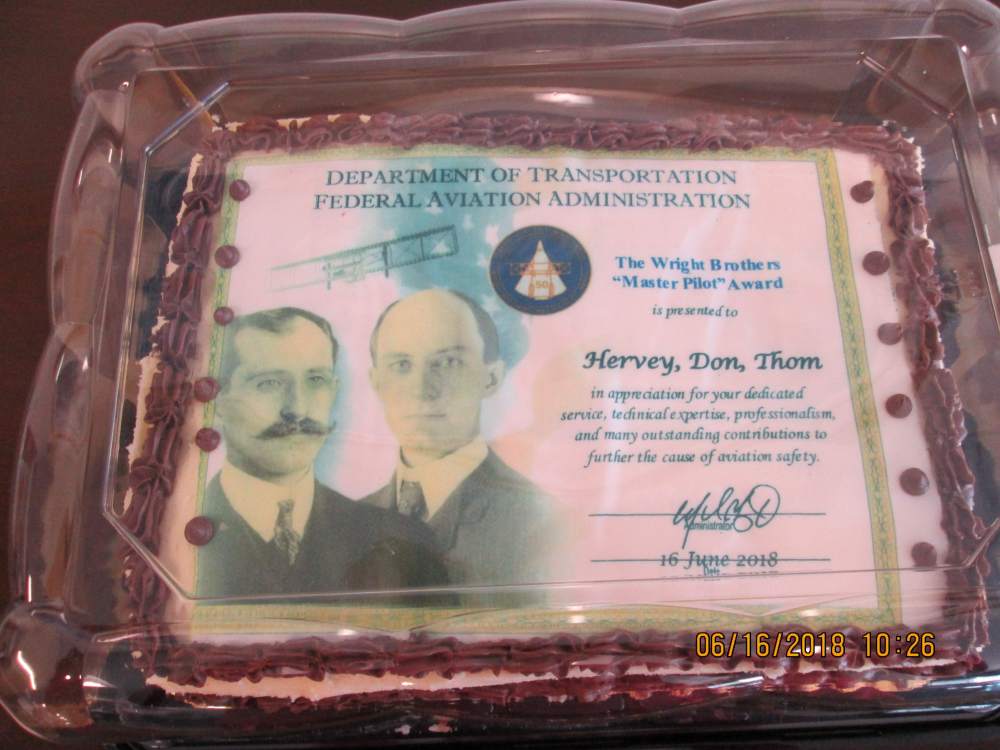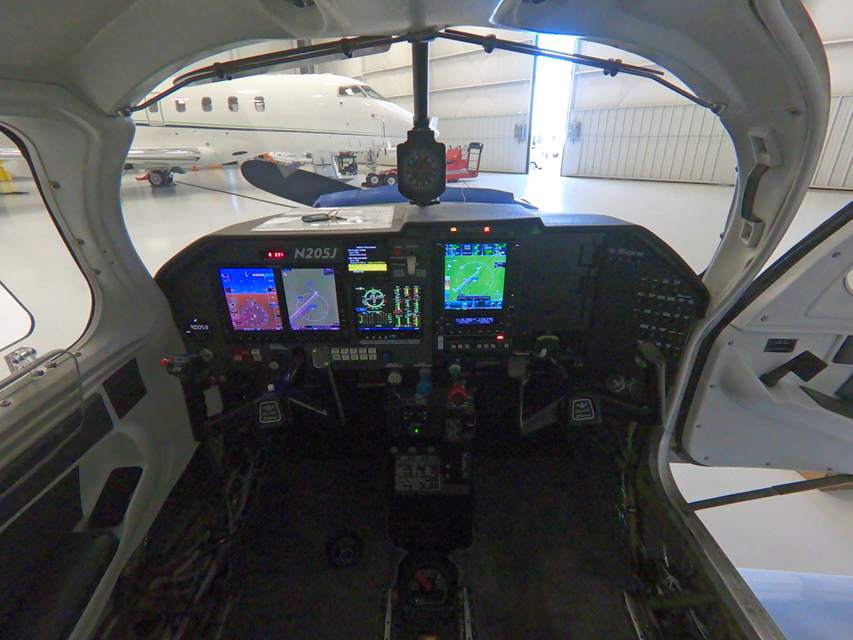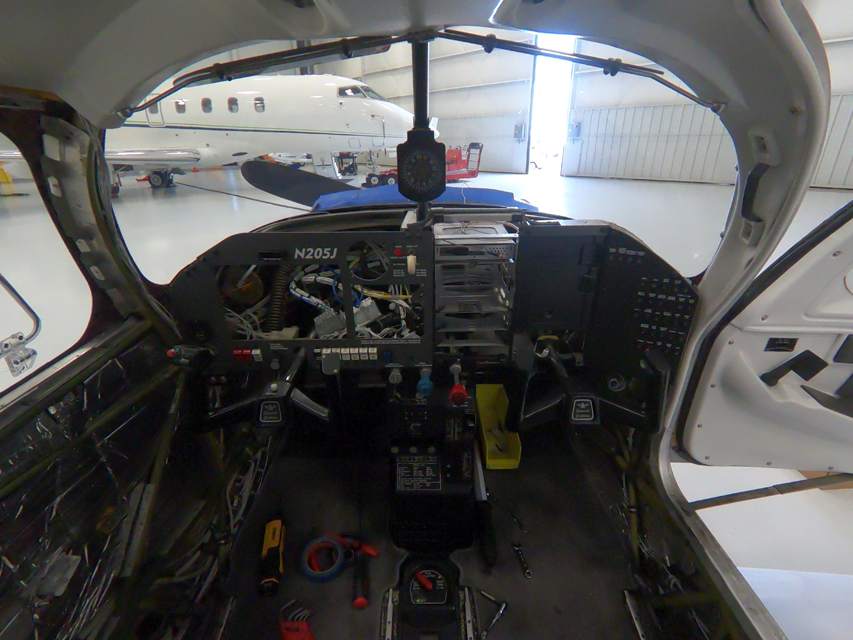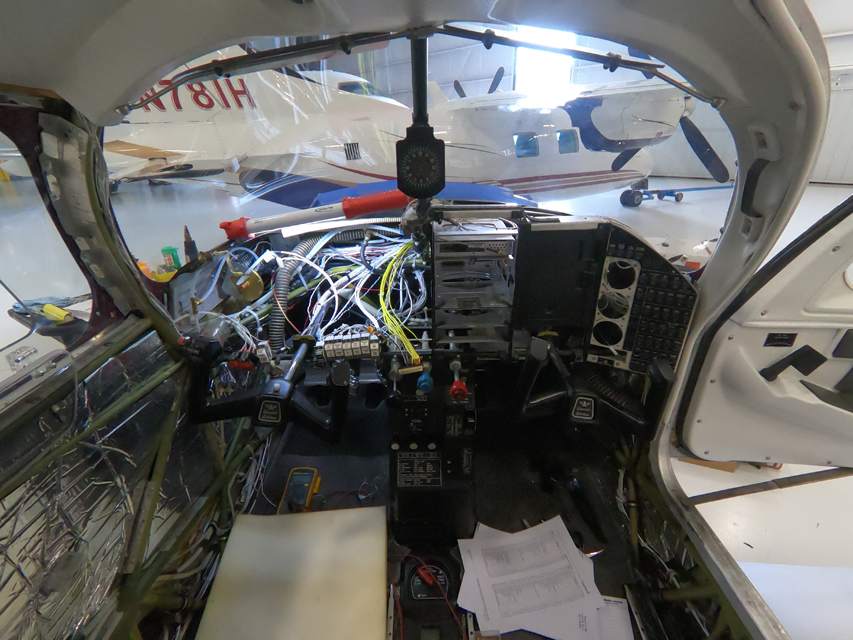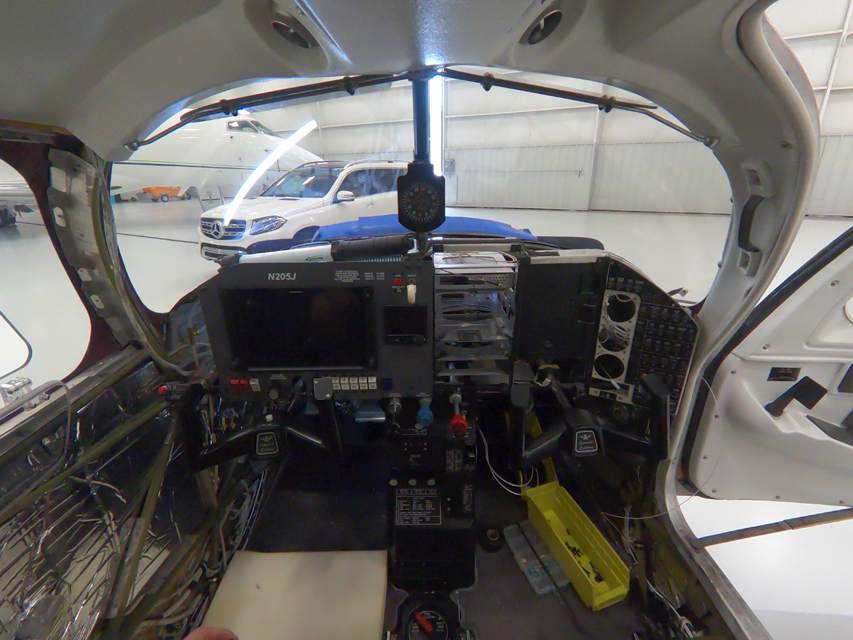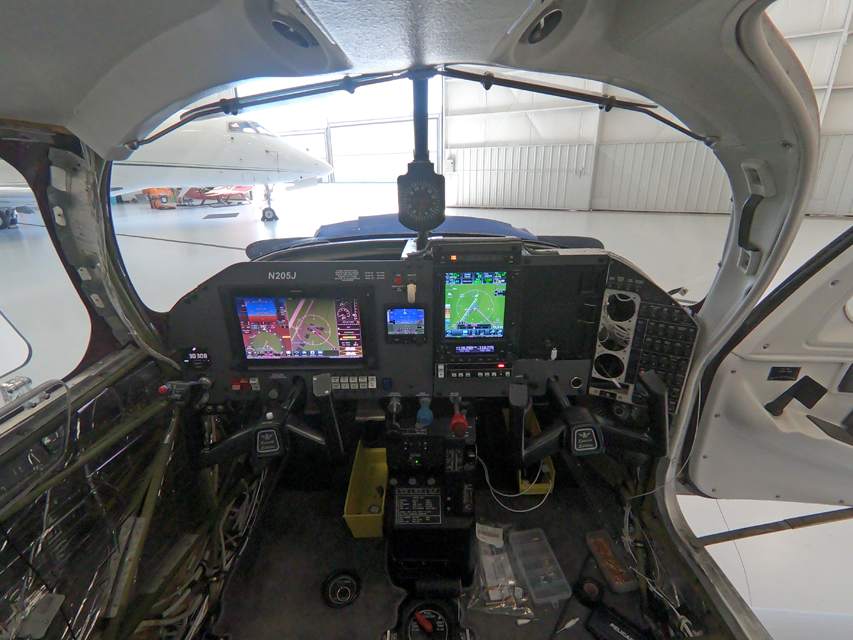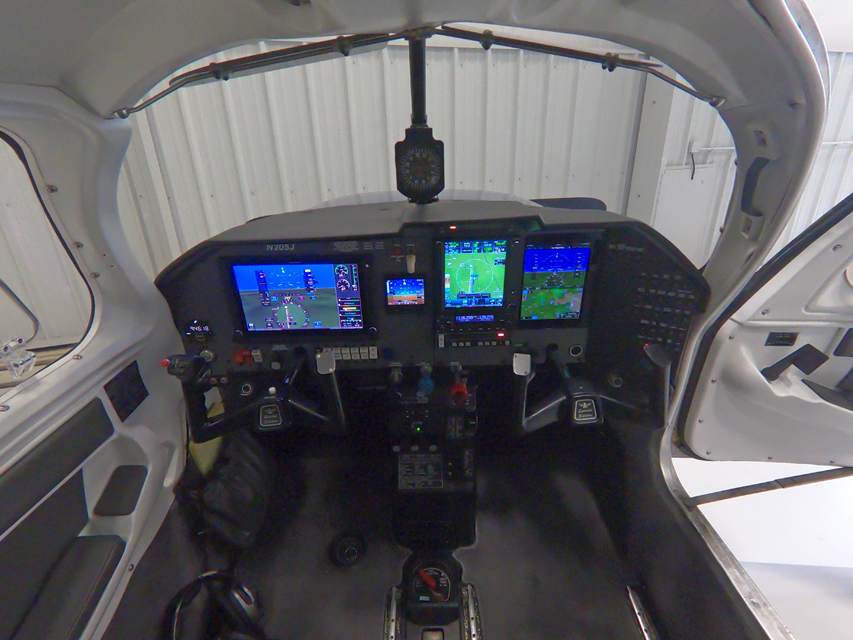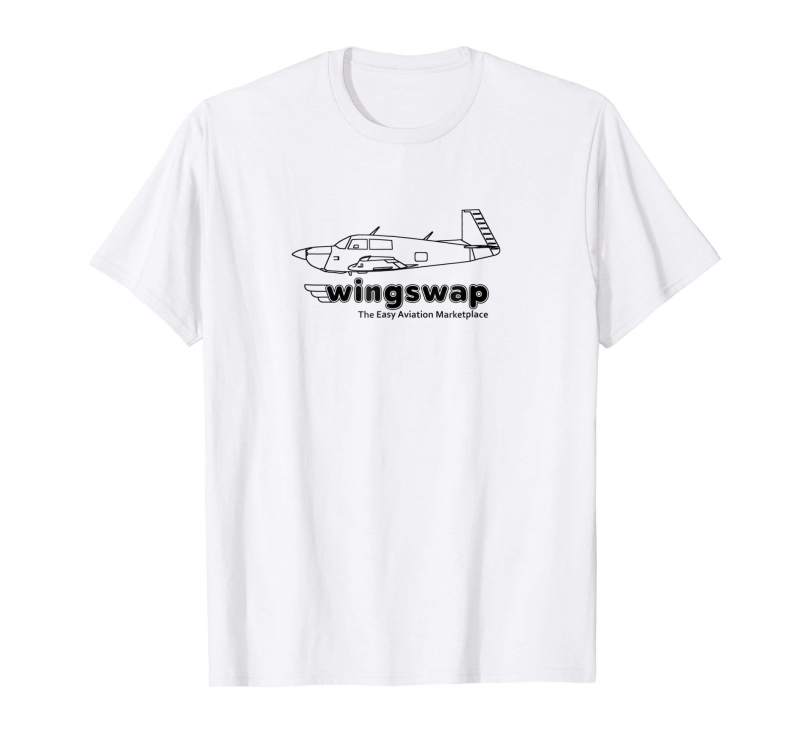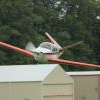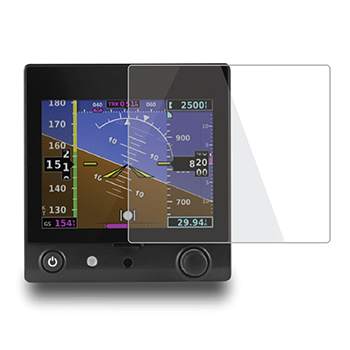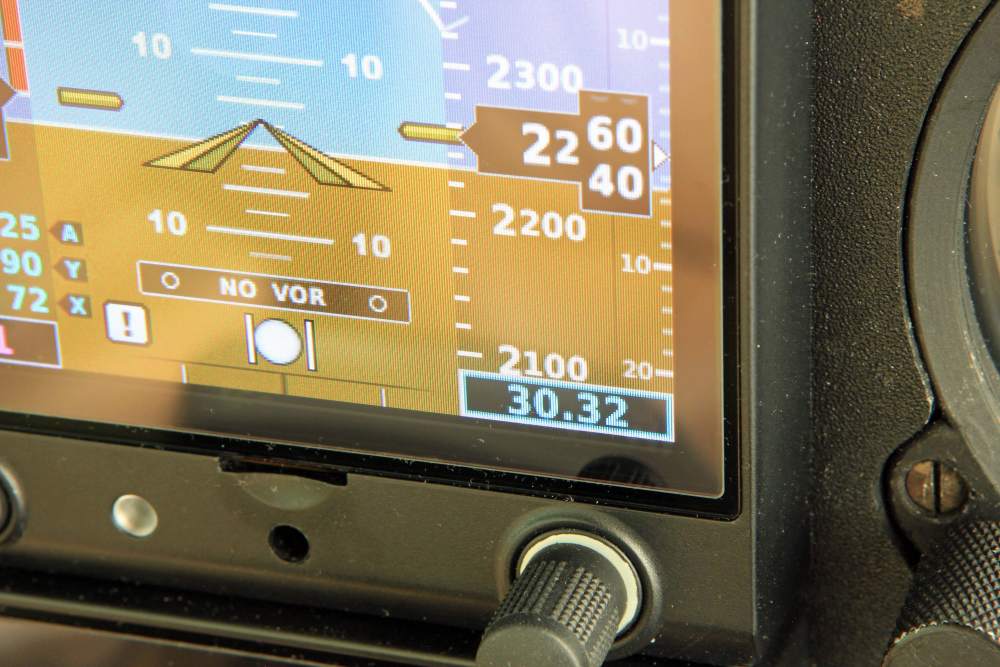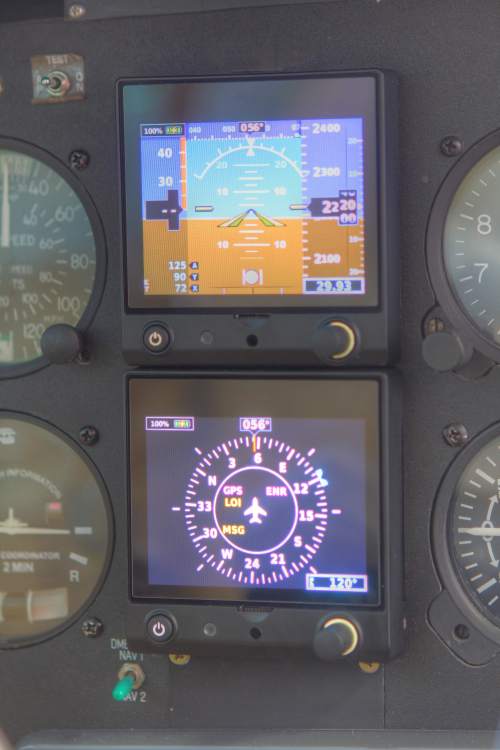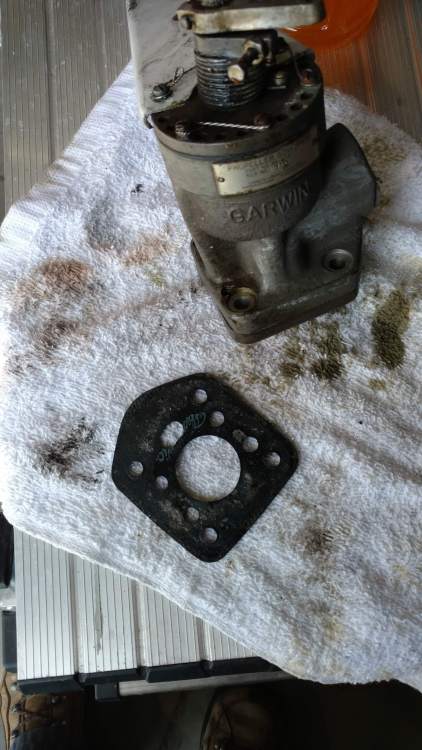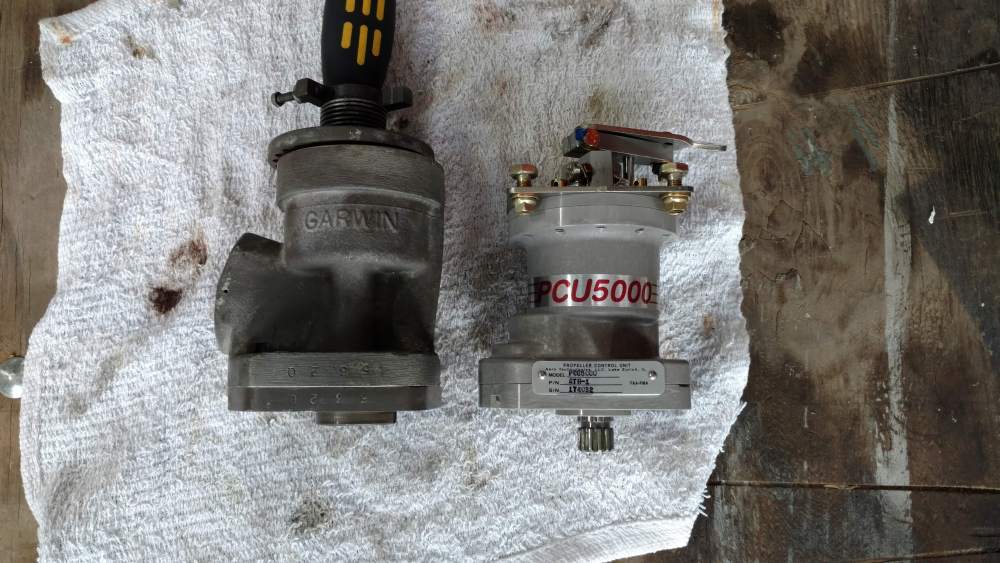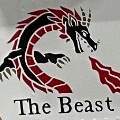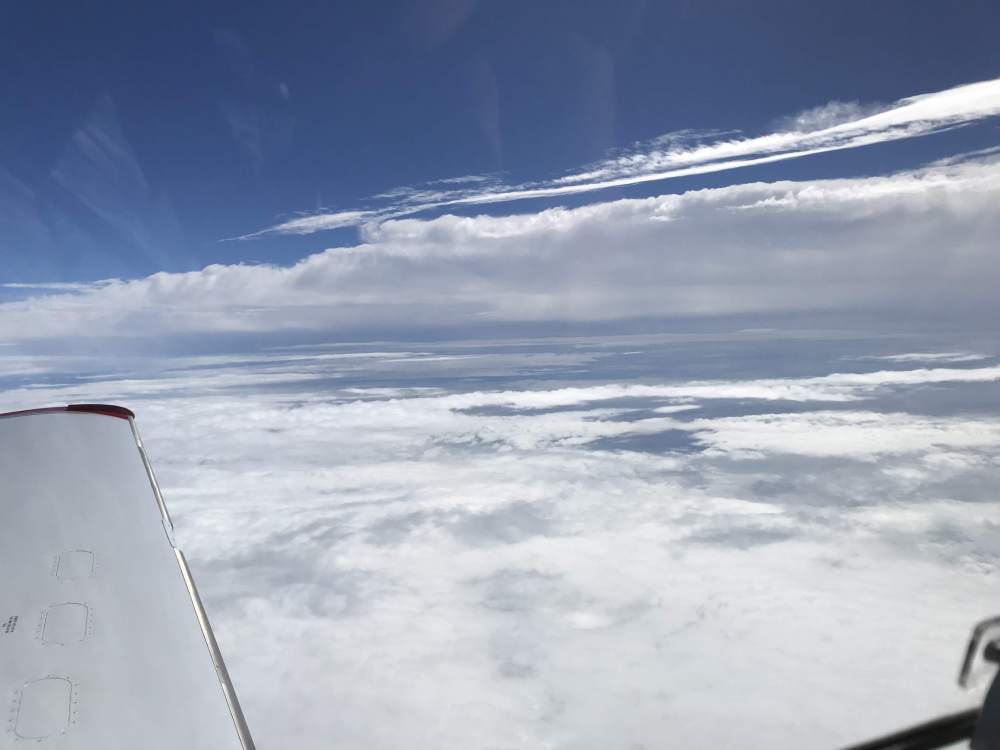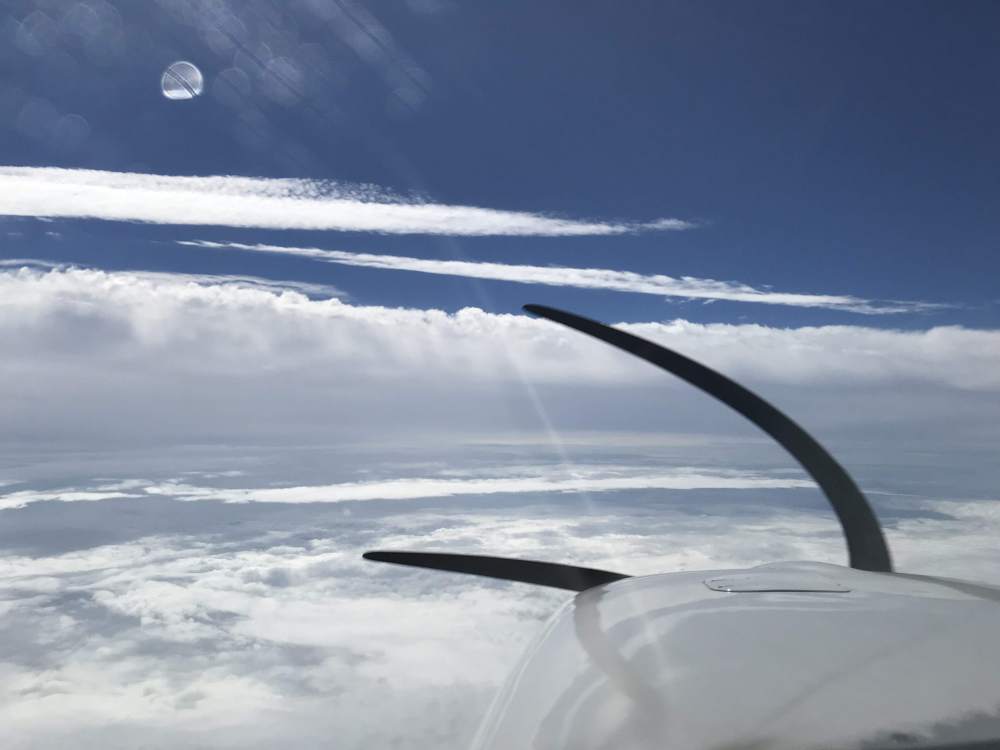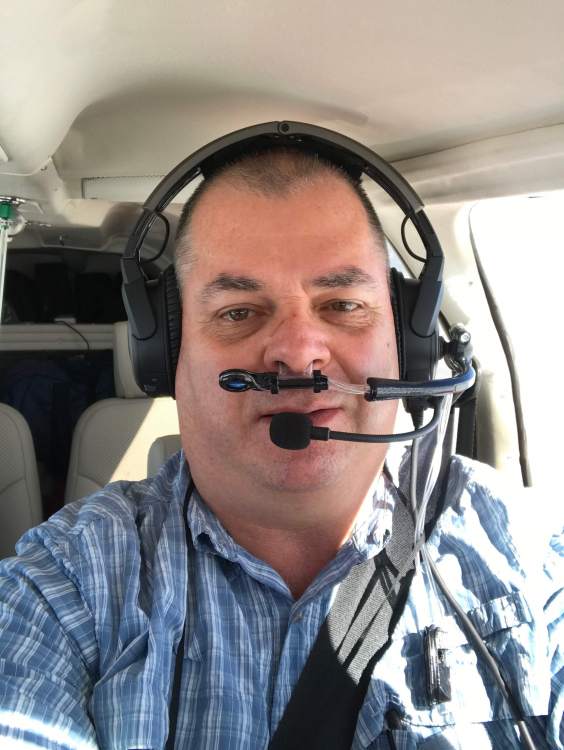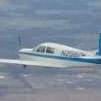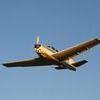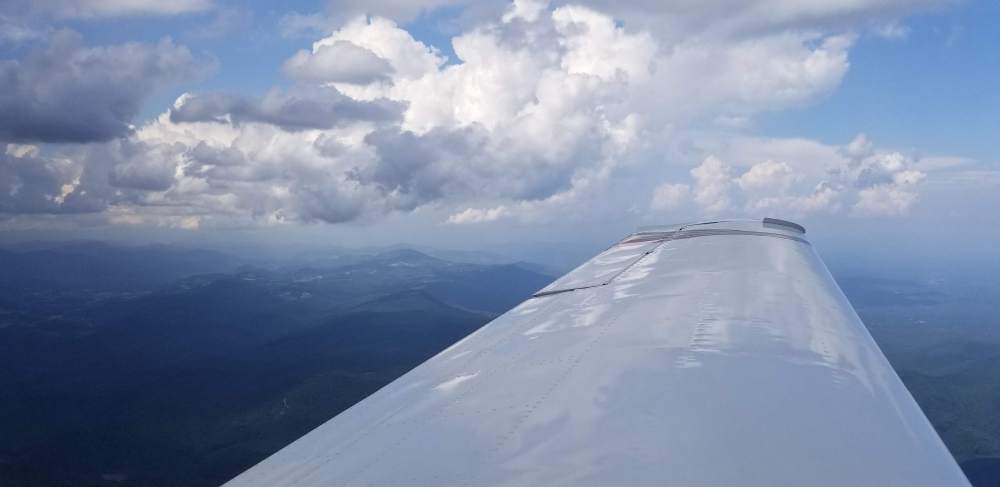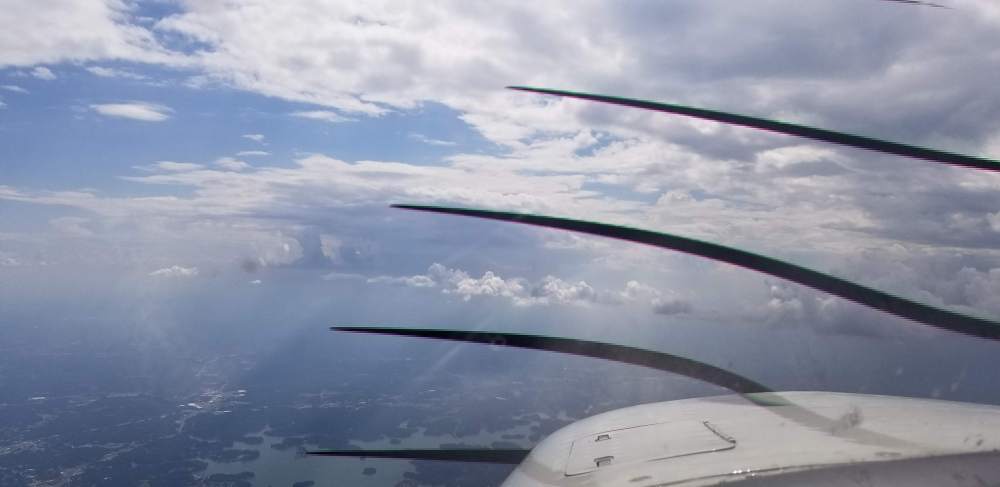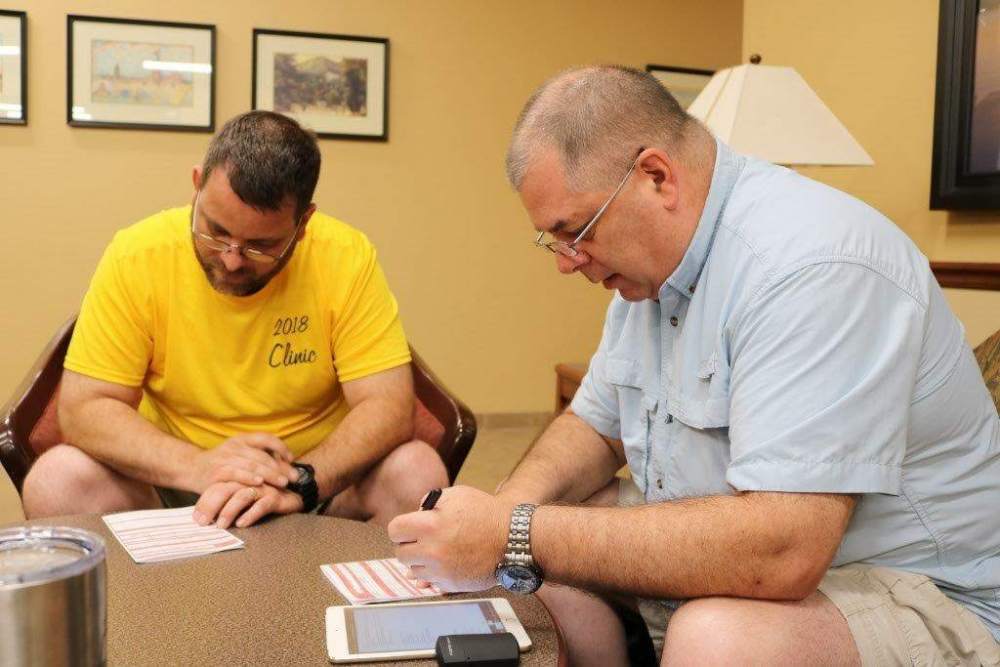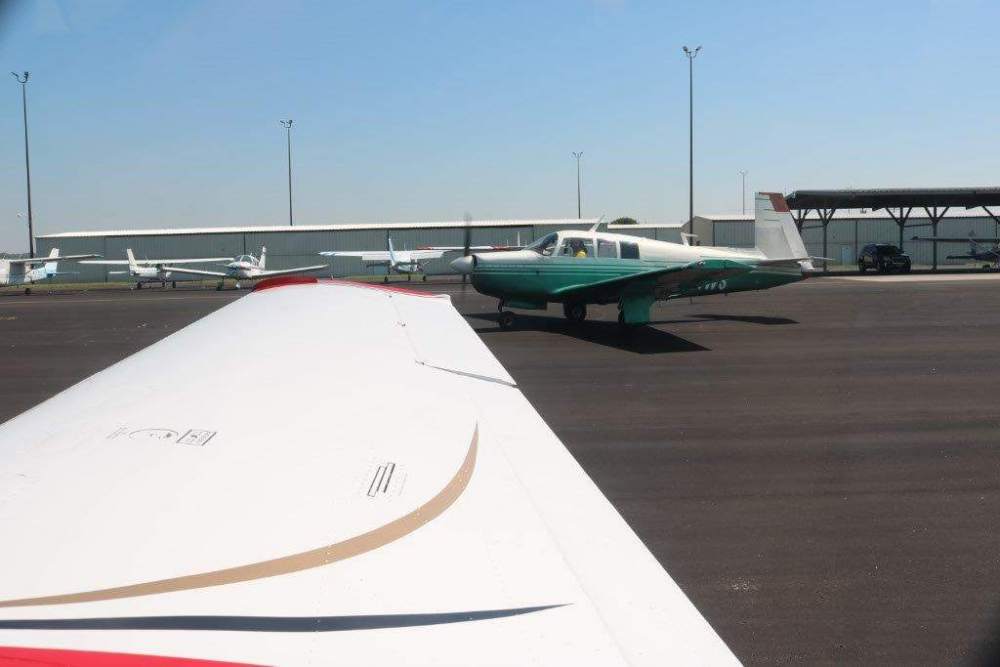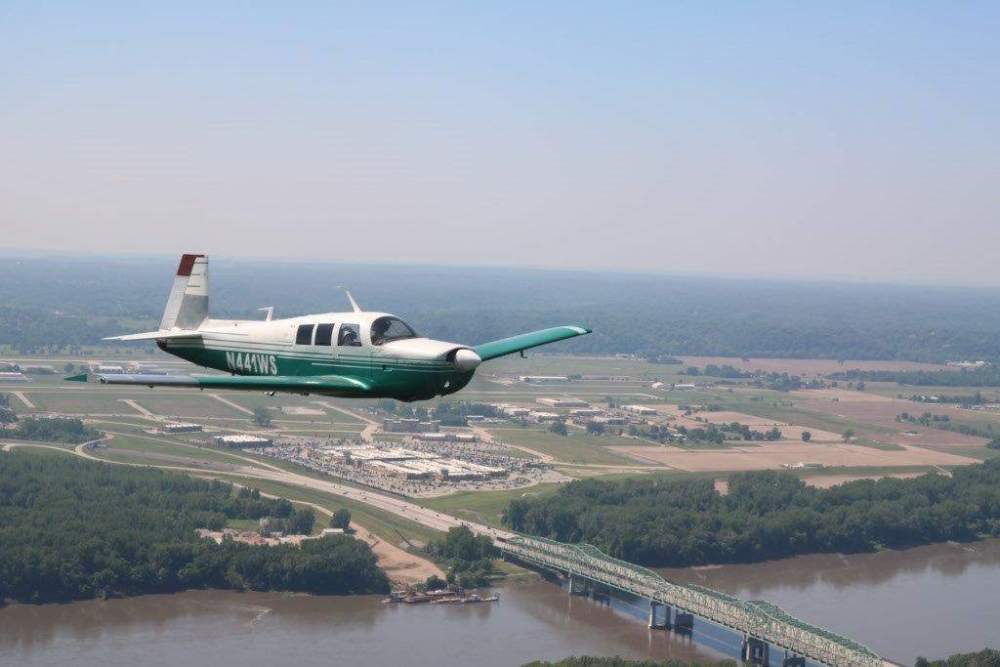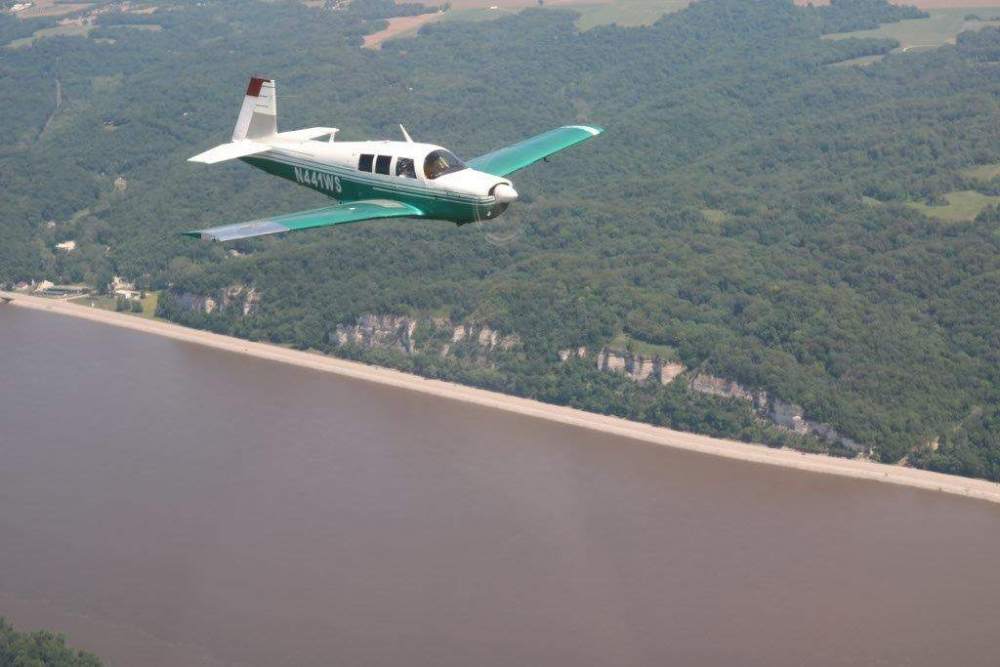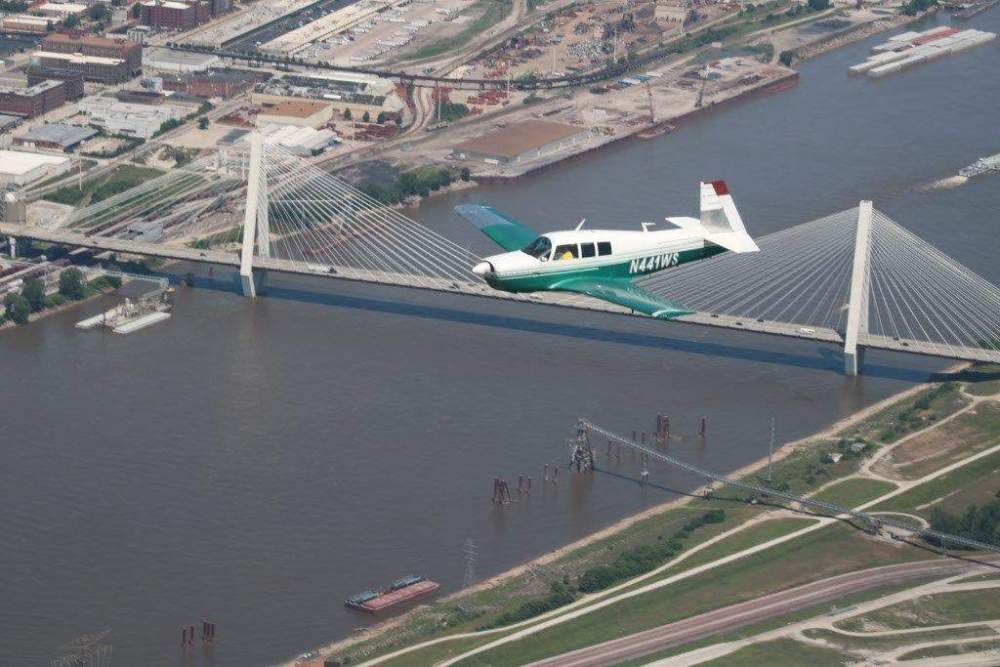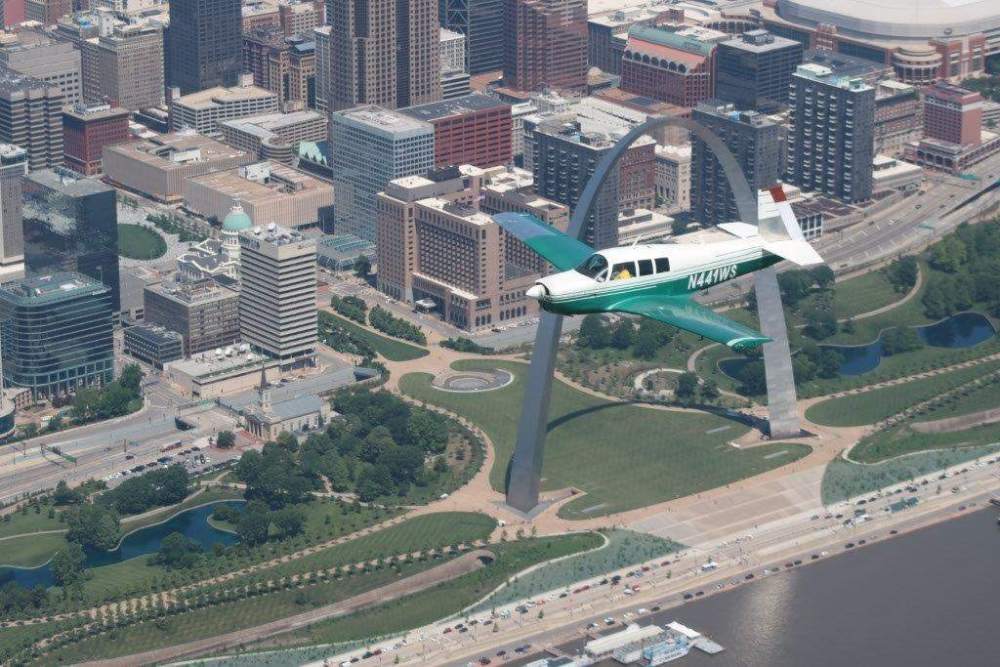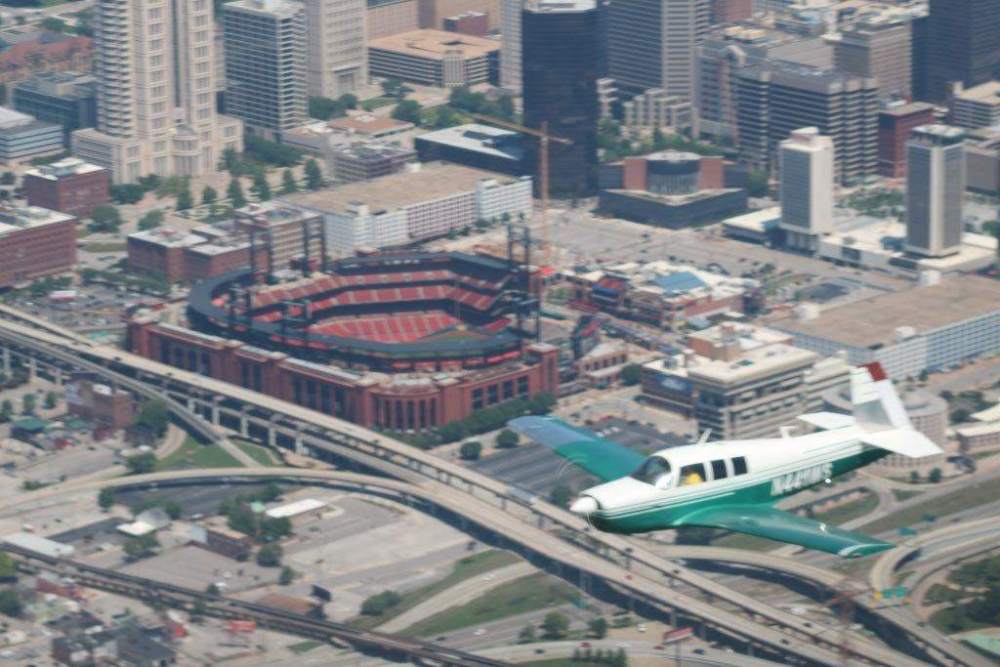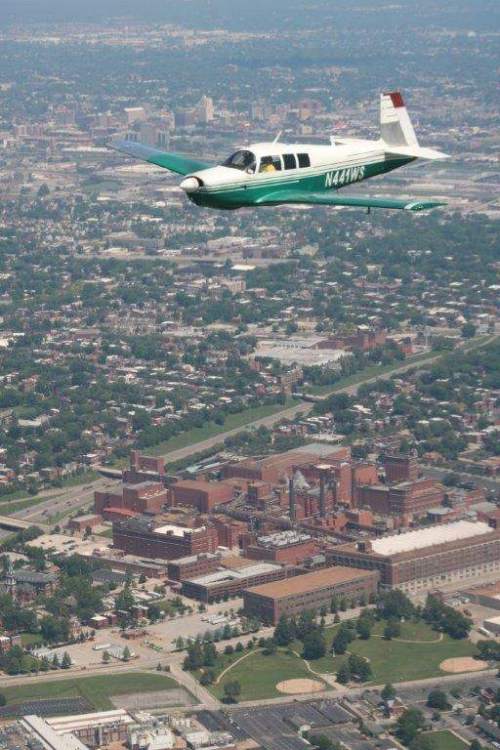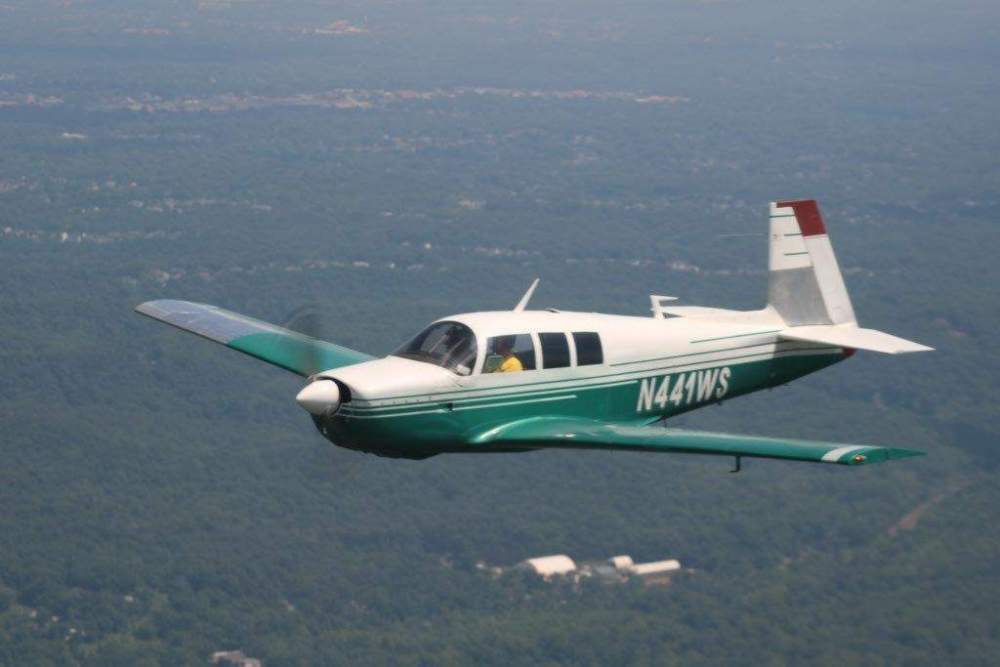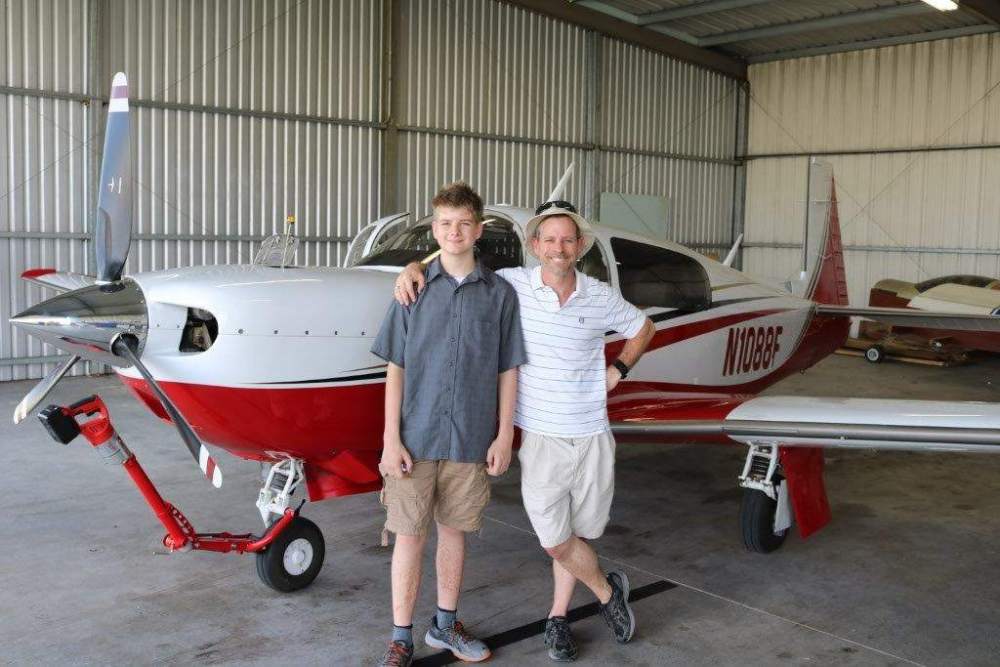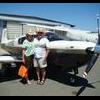Leaderboard
Popular Content
Showing content with the highest reputation on 06/21/2018 in all areas
-
Fellow Mooniacs, I’m retiring this summer and decided to sell my Acclaim. The buyer and I close on Friday. It’s been a great run over the past 33 years. 100 hours in the J, 850 in the K, and 310 in the TN. What a great ride it has been! My wife and I have flown through snow, ice (thank you, TKS), rain, hail and everything between. Lots of turbulence, mountain waves and rotors, too. But our Mooneys always delivered us safely to our destinations, which are too many to count. I owned the Acclaim for 7 years. During that time it was based in Denver. From there it took us to Kansas City, Arkansas, Dallas, Austin, El Paso, Albuquerque, Minneapolis, Salt Lake, San Francisco, Los Angeles, Phoenix, Vegas, and many others. It also carried us round trip from Denver to Cabo 6 times. There’s nothing sad about this; my wife and I have just decided to move on. We have both lost our taste for making long cross-country flights in the Mooney, and I’ve lost my taste for anything but short flights in day VFR in perfect conditions, after flying IFR for 25 years. To that end, I have a beautiful RV-8 that I’ll be moving to Northern California to fly on beautiful days. The Mooney community has always been amazing. That includes all of you. But I would like to give a special shout out to a few people: First, to Don Kaye, who made me a very competent Mooney pilot, IFR or VFR. Second, to Bruce Jaeger, for the very same reason; he also made me more competent than most in the Acclaim, and I flew that plane with a lot of confidence thanks to him. Jolie Lucas also deserves mention; she’s the greatest Mooney ambassador of all. I had the privilege of meeting her at Oshkosh. And, finally, Carusoam, Dave Norinsky, gsxr and Mr. Muncie, who are fantastic contributors to MS. There are obviously many more and I’m grateful to you all. My Acclaim is going to a great home and I hope the new owner will become a valued member of this community. As for me, I will continue to lurk, and if I can offer any information of value I will gladly do so. Keep the blue side up! Thank you all. Joe Zuffoletto, Jr. 303-330-9199 mobile jj@zzmail.me19 points
-
13 points
-
8 points
-
Someone asked that question in my college flying club in Texas when we had a "ground school" session for those interested in checking out in our F model Mooney.... "Where is the best place to land a Mooney if you can't get the gear down?" Answer: "Kerrville" Sent from my LG-US996 using Tapatalk5 points
-
I have owned my 80 231K/Rocket for about 5 years now. I have NEVER seen Fuel Flows at the level they should be. Maxed out around 27gph on full power. I have mentioned this every oil change/annual. I was always told it was within specs. Well, the last few flights it never came above 23gph. I mentioned this again. Time to send fuel pump out (fine) a new/rebuilt one comes back. Now fuel controller is dumping gas. It goes out (fine). All put back together and log notes state totalizer is showing 5GPH high. I scratch my head.. NO WAY. It's been spot on for 5 years (even had a conversation about it with maint. manager) I was shown the certified gauge they used to set it up. He says, "keep an eye on it and let me know." I decide it's best for me to go solo on this one. I enter the runway and slowly push up the manifold pressure.. the fuel flow keeps climbing and climbing at gets to around 39gph. (they did say it was showing 5 gph high) But, I am hauling A** and by this point very far behind the aircraft and decide its time to stop watching and start flying. Well, I'm well down the runway and moving fast, so when I rotate I blast off!! and that's when the motor just went BLAAAAHH. I made the immediate decision that I was not ending up on the other side of the fence. In one swoop I had pulled the power, put out airbrakes, and put the plane into one of the wildest slips you would ever see this close to the ground, while at the same time dropping flaps. I hit the ground just as I rolled out of the slip. Had to commit to another decision. If I went off the end of the runway, into the grass/downhill, I'd loose all braking force and still be in the fence. So I got as far to the right as possible and cut the left corner off the runway with tires screaming. I fully expected to hear metal crunching as wing hit or gear collapsed. I got it stopped in the staging area. Then realized the motor was running fine. So, obviously. My gauge is fine and I totally flooded the motor on takeoff. After some extremely direct "conversation" with the Maint. Manager. He offered to purchase a new gauge and look at it. Just got a phone call. The rebuilt core housing is bad and wont let the set screw hold the adjustment screw in place. So, it was backing out and increasing the pressure. They had it set correctly in the hanger but, when they buttoned everything up and did a final run the totalizer showed 5 high, because.. it was after the adjuster backed out. I'm not really sure what the moral of this story is. It should NEVER have left the rebuild company like this. My guys SHOULD have caught the problem. I SHOULD have insisted on more follow through/testing before attempting to fly. Just sharing a story, because it was scary.3 points
-
This project was worse scope creep than anything I've ever seen as an engineering project manager. And the scope creep was on top of scope creep. It started out with an insurance settlement for hail damage. We were going to do a lot of the paint and body work ourselves rather than use a shop, and then we'd have $10,000 left over. Then we'd bring $10,000 of our money and upgrade to an IFR GPS. That was the only requirement for this project, IFR GPS approach capability. Nothing more, nothing less. However, after speed mods, checkerboards, paint masks, and who knows what else, we only had like $3,000 left over from insurance. But I'm game, let's keep the total budget to $20,000. Which, for the record, will meet the minimum requirements which as far as I was concerned was an IFR GPS unit (a G430 used was fine with me, or an Avidyne or whatever) and the accompanying indicateder ($2,000) or so. But, heck, I'll make some allowances for a cost overrun. But apparently, because we're tearing into the panel, we also couldn't live without an HSI, and ADSB that was compatible with the GPS that we purchased (which was double some of the more economical ADSB compliant options), a new intercomm, a new comm 2 radio (I am still not certain why except for ours was old), and a panel rearrangement. Bleeding our budget one finger prick at a time until we were almost 100% over budget. For the record, the autopilot worked just fine before this project. Also the hairy legs in the photos are Byron's not mine, rare time he's in the left seat.3 points
-
Time has a way of slipping by almost unnoticed---until it is. Yesterday I had the honor of participating in a Wright Brothers Master Pilot awards presentation. There were 3 of us getting the award. One of the requirements is having flown for 50 years. The time starts from the first solo flight. Not surprising all of us had first soloed in 1967. As I listened to the accomplishments of the other 2 participants given by Karen Arendt, the FAAST Team manager at the San Jose FISDO, I marveled at how unpretentious both were in our pre award conversations. You can do a lot in 50 years, as was demonstrated by these two individuals. Karen first showed a movie detailing the Wright Brothers step by step achievement towards attaining powered flight. Then she detailed the histories of each pilot with input from each as she went along. Photos from each of us went a long way in guiding those biographies. I remember Karen talking to me about receiving the "Blue Ribbon Package" which determines one's eligibility. That package was given to each of us and contained every document the FAA has ever had on us. Once home I reviewed it, and a lot of memories were brought back. It contained the results of every knowledge test, every flight test ever taken, every medical, and every renewal of the flight instructor certificate. Needless to say after 50 years it is pretty thick. And just think, the FAA has this record on each and every pilot in the United States. We were given a beautiful plaque, a letter acknowledging 50 years of our lifetime in aviation, and lapel pins for us and our spouses. The celebration finished wth distribution of pieces of cake that Karen brought and is shown below. All in all quite a day.3 points
-
Mooney go fast because is slick. Flaps make Mooney not slick. Flaps bad. Climb fast with no flaps, keep engine happy. Happy engine make happy pilot. Happy pilot make happy Mrs. Pilot. Happy Mrs. Pilot make Pilot more happy. Flaps bad.3 points
-
Ah, the old debate redux. Can’t resist: I operate at any ITT up to redline. I ignore MP and CHT and mixture and GAMI spreads ‘cause I don’t have any. No ROP or LOP for me: I run LOK (lots of kerosene)3 points
-
Hi all: Just got the upgrade done. I test flew it for 2 hours yesterday putting it through its paces and fortunately came out squawk free. I will be providing some PIREPs in the future after I get some more time flying behind the new setup. For now I figured I would post some snapshots of the conversion. Garmin G500 and JPI EDM 930 were replaced with the Garmin G500 TXi and the new integrated Engine Information System (EIS). Also had CiES Fuel Senders installed for increased accuracy since one negative of the Garmin EIS on the single 10.6" screen is that it does not show remaining fuel based on the fuel flow transducer, but rather what the fuel senders show in the tanks. So I wanted to have good accurate instrumentation with this setup. The remaining fuel flow based on the fuel flow transducer data is available, but you have to bring up the Engine page on the MFD screen to see it. I had Terry Heim @N6758N install the senders for me since he had did it on his plane and @Marauder's plane. So I figured it would be good to have someone that just did them twice already to do mine! I will say that the CiES integration with the Garmin EIS was pretty seamless and Garmin's interface for calibrating the senders was superb. I took video of that so I will upload at a later date. One nice thing about the Garmin EIS is that every sensor and gauge is setup by the installer, so no need to send it to the OEM to setup for your aircraft. If you had different senders, you just select what they are in the EIS setup page. Original OEM resistive senders, you select that. New Digital senders, you select that, etc. Here are some photos:2 points
-
and it plays nicely with "foreign" hardware. It basically contains a wifi router and has firmware which features can be added and unlocked simply without the need of a fork lift replacement. Very well thought out scalablility.2 points
-
Yep, same in my C. I learned to leave Mixture off the GUMPS check. Just left it lean all the way to the ground. If I needed to go around, I could get both black and red knobs at the same time.2 points
-
I am out of town, flying actually, and can’t respond at length, but the High Boost button does a better job of filling the lines than the primer, at least that is what my engine seems to think. The high boost was nifty once I discovered it, and I have not had a failed start since then under any conditions including Leadville and -20F when the line guy forgot to plug the plane in. As I said, that one takes a couple of tries, but it will start with a little hi boost help.2 points
-
I decided to make some Oshkosh Mooney WingSwap T-Shirt specials, only $12 shipped! I'll be handing out free wingswap shirts at oshkosh (although they will be supercubs on it, not mooney) Here you can find all the shirts https://www.amazon.com/s/ref=w_bl_sl_s_ap_web_7141123011?ie=UTF8&node=7141123011&field-brandtextbin=201+MPH+Club+Shirts2 points
-
Good news! I'll be joining my boss in his travelair on a trip to Oshkosh, so this will be the first time I fly into Airventure! I had plan on handing out a lot of high quality WingSwap t shirts with an airplane on it to people. However to keep costs down, I could only go with one design, and after a social media survey, the design that won out was of a supercub, and not a mooney as I had hoped haha! I thought some might be offended by this, so I uploaded some mooney ones to Amazon you can buy at cost, so its only like $12 shipped for a Mooney one. I'll still be handing out free super cub wingswap shirts at oshkosh, but wanted to give you guys some options. Can't wait to meet everyone! Round Window Mooney Oshkosh T-Shirt Square Window Mooney Oshkosh T-Shirt2 points
-
Thanks for sharing your horror story! Who did your CMI pump rebuild? Did they bring it up to the latest pump configuration for your TSIO-520 called out by CMI? Your story is a good lesson/reminder for many that think its okay to load the family up or depart IMC right or even for a long x-ctry flight right after extensive maintenance when really a maintenance flight is is required to prove the aircraft is all okay first. Ground run ups only go so far.2 points
-
I am proud to present my newest product for your aircraft.The Gallagher Aviation Garmin G5 Screen Protector is designed to offer long lasting superior protection for your Garmin device. You just spent a considerable amount of money upgrading your dated electronics to the Garmin G5. The Garmin G5 Screen Protector provides protection for your expensive screen from scratches and nicks for many years of future use in your aircraft.If you want premium protection for the screen on your Garmin G5 device, look no further than Gallagher Aviation’s Screen Protector. This display protector is made of ultra-thin, scratch-resistant glass, comes with a smudge-proof coating, and is extremely easy to apply. The end result is a clear view of your screen without the hassle of bubbles or dust getting in the way.The tempered glass has 9H hardness (high grade glass), which provides extensive resistance to scratches, including sharp objects like knives and keys. This screen protector is laser-cut for a perfect fit for your Garmin G5 device. It is smooth to touch and has an oil-resistant treatment which allows a quick wipe to restore your screen to sparkling clarity.The Screen Protector will provide unparalleled protection for many years of use with your Garmin G5 avionics.I have partnered with Aircraft Source and Sarasota Avionics to distribute this new product and orders can be placed at the link below. All orders placed will be fulfilled by myself and will be shipped via USPS First Class mail. Buy Now Link!: https://avionicssource.com/product/g5-screen-protector/ Buy Now Link!: http://sarasotaavionics.com/avionics/g5-screen-protector1 point
-
My model is a 1968 M20C, I replaced my Garwin (yes Garwin not Garmin) with a PCU5000 you have to make sure the mesh wire screen gasket that comes with the unit goes the right way. The Garwin could not be rebuilt they rejected it. It was leaking oil also but worked fine. My old unit did not have a screen and I got a faster response from it, there's a pic of the old unit with the old gasket. I think the screen delays the oil from going to the prop making it respond a little slower. You will really notice it when the engine is cold. You will need to be careful on take off that you don't push the throttle into the fire wall quickly or you will over speed the prop. The unit is smaller and bolts right on. I had to adjust mine by removing the 6 screws on the front to move the plate then wire tie it back up. Mine works great just not as fast as the Garwin. Also the unit comes with studs for mounting. I couldn't use the studs because to mount the unit it would hit the fire wall. Not enough room to clear the studs. We used the same type of bolts that the old unit had which worked out fine. It makes mounting and removing the new unit much easier. The picture old unit does not have any parts in it with no gear poking out. I just took the pic to compare the size of the units.1 point
-
Made it to KDAN from KSUS today for this weekend's Caravan Clinic. I let Goat down earlier this year at KECP when I was a last minute no-show for weather, there was no way I was going to do THAT again! So I left a day early to get ahead of the thunderstorms forecast for Friday. Today's weather wasn't TOO bad for a 3+30 flight at 15K... And yes, that's me smiling. Cheers, Junkman1 point
-
Many thanks to all new Turboplus M20K intercooler customers. Since receiving our new PMA we have shipped 18 intercooler systems worldwide. We are building another10 intercoolers right now; three take delivery in July. A big shoutout to all the FBO's who continue to recommend the Turboplus intercooler system. Thank you Merlyn Products for your support and recommending our intercooler kit to your M20K customers. We continue to offer MooneySpace discounts for our intercooler kit and three owners have taken advantage of this offer. Visit: Turboplus.com for detailed benefits of flying with Turboplus. http:// www.Turboplus.com1 point
-
1 point
-
1 point
-
1 point
-
Antique (production) planes (built at least 30 years ago) are allowed 2" numbers. (If I were to leave the USA I'd have to use temporary 12" numbers.) Here's Scheme Designers really nice summary which links to the appropriate section or part 45. http://www.schemedesigners.com/FAAregs.htm1 point
-
1 point
-
Good luck my friend. We all love our Mooney but any real aviator loves anything that flies. That's one good looking RV8.1 point
-
Hah, just watched the video; there is a lot packed inro that little box. Seems to be transponder + adsb in/out + a lot of WX functions from a foreflight /iPAD/stratus setup.1 point
-
If you aren't ready to adjust them (may as well replace the orings when doing that, since it will require replacing the little cotter pin in the castle nut when you adjust the tension and when you disassemble to replace the small inner oring), gently pry the tab up and give a small squirt of TriFlow along the center shaft, then fold the tab down and up a few times. Then next annual, replace both orings in each cap anyway.1 point
-
1 point
-
For me, solved the 9.7 control panel issue by inverting the cradle. (Sporty's #7308A) Was able to keep the same base and arm as on the mini. When mounted correctly , had visual obstruction of key instruments, after inverting cradle 180 degrees, no visual issues. One minor problem with this method is that the original base clamps are now on top and the one on the right is now above the on off I pad switch. With a bit of turbulence, have had the sw. activated and Foreflight shut down. This was solved with end nippers and a box cutter to partially remove the plastic cradle clamp above the I-Pad switch. With this set-up your approach plates will now measure approx. 5 1/2 by 7 1/2 inches. Bifocals not needed.1 point
-
You have a leaky flap pump. It is the ball that the pin unseats when you move the lever. If cleaning it doesn't get it to seat, then you need to re-coin the seat by putting the body in a vice putting the ball on the seat, putting a punch on the ball and giving it a firm whack with a big hammer. This will form a perfect gas tight seal on the ball. after 50 years the aluminum seat can become slightly corroded and leak. In the mean time, just let it be for a while. If it is dirt, it might get flushed away.1 point
-
Yep, going to start in the morning (unless it floods again) and I'll actually split the wheels so it will be a long day(+)1 point
-
Even if I know how much fuel what was in my plane when I locked it up in my hangar I always dip the tanks and check it before the next time I fly. It doesn't take long to verify actual fuel during pre-flight and I can see no reason not to.1 point
-
I was a huge fan of the mini... but without new ones coming out... possibly, I got a 9.7 Pro. It doesn't go on the yoke but it's awesome. I love the performance and the larger screen for my older eyes.1 point
-
I tried this method yesterday. It did work much better than using the primer after initial start. I believe the primer runs the boost pump and activates a solenoid to feed fuel to the primer circuit. There are two primer nozzles (one each side) that sprays fuel down the intakes. So the fuel distribution to each cylinder is probably poor. The engine fires but doesn't run smooth until the mechanical pump can get fuel to all 6 injectors. This is why jlunseth's method works better. The boost pump can supply fuel to the injectors quicker, initially, than the mechanical pump. Cheers, Dan1 point
-
Doesn’t Apple usually release new stuff in September? My mini 2 is slow as well, and the battery starting to fail to hold a charge, I’d probably go with the 9.71 point
-
-a- There is no next. Fifty years and 30K+ hours is enough. Loved the Ovation2, but moved to Texas from AZ and couldn't find a nearby hangar. I was driving 45 minutes to a crappy hangar in Lampasas with dirt floors and a lip that was very difficult to get over. In addition, the 'boss' was becoming a nervous flyer every time we hit a bump. All good things must eventually come to an end and I didn't want such a nice plane to languish, so I found a new home for it here in Georgetown. The new owner is giving me visitation rights, so maybe I can right shotgun for approaches or an occasional breakfast. Dave1 point
-
It isn't in the speeds at the end of the manual. In my 1965 manual in the "Flight Procedures" section on page 19 it says: "An enroute climb speed of 115-120 mph IAS is recommended for improved cooling and good visibility." In the 1977 C POH which is much better it is in section 3, Normal Procedures on page 3-14: "An enroute climb speed of 115-120 MPH (100-104 Knots) IAS is recommended for improved engine cooling and forward visibility." I use 120 mph IAS whenever possible but there are times such as heading north out of my home field that I have a steeper climb at a slower speed. The need to go from 533' on the ground to 8,500'+ to feel comfortable going over the mountains north of San Bernardino in about 25 miles necessitates it.1 point
-
My problem is that maximum speed for flaps in my plane is 100 mph but the best speed for an enroute climb is 120 mph so I retract at 400 AGL and trim for 120 mph.1 point
-
1 point
-
Now EVERYONE will want to come in for the St Louis formation tour! And everyone is welcome! Had a great time with "Patches" and his family, to include a celebratory lunch following our flight. The friendships afforded by our passion for flying are priceless. Cheers, Rick1 point
-
Just finished my CPL last month. I used my own plane. Personally, for me I completed the CPL to be a better pilot, in my own plane-an Acclaim. I was also initially concerned about abrupt power settings, slick airframe etc. This is what I learned..... -Our Mooney's offer little forgiveness in the commercial maneuvers. You can get way out of specs really fast. Lazy 8's and precision power off landings in particular were the most difficult for me. However, with practice they are very doable and you can master them-you just need stick time and a few pointers. Know your aircraft and hone your skills and you will be just fine. This is the point/purpose of obtaining a CPL. -Most of the maneuvers require a steady platform with very small corrections. The Mooney is great for these (360 power on turns, eights on pylons, steep spirals). -The CPL maneuvers are best performed 90% visually-looking outside the plane. Pick a spot on the cowling and it's reference to the horizon-learn what things look like. Occasionally peek at your instruments to verify trends. As an avid IFR guy, I had a tendency to focus to much on the panel. I doesn't work. -Power changes are not an issue in your own plane. As PIC you choose when the maneuver is completed. I was very clear with the instructor and examiner that we will need to cool down a bit before the maneuver, if I was required to pull power abruptly. All the maneuvers are done at Va which is usually a fairly low power setting anyway (16 inches in the Acclaim). After climbing (high power setting) to complete the steep spiral, I just slowly backed off the power and let the temps drop before pulling power. No one had issues with being "kind" to my engine. In fact, they were impressed that I was thinking about the totality of the flight and took initiative. -Speed brakes offer little help. In fact, I found them of no use. Just figure out the power setting for Va, let your bird slow down then do your thing. My examiner did not care if I used them as part of my "protocol" to complete a particular requirement. You just have to be able to explain exactly what you are doing and why. -What I found to be very helpful was to have intermediate points in each maneuver that required precision altitude/speed. I would then adjust pitch/bank/ rudder/throttle to keep myself within a reasonable spec. By the completion of the maneuver I was always spot on. -During the exam be aware of what is going on both inside and outside the plane. My examiner started hyperventilating on the first part of the "planned" cross country trip. He used this (ya, fabricated issue) to terminate the trip and set up for an emergency landing at an unplanned location. He was looking to see that I could handle a passenger issue and fly the plane safely. I dished it back by having him sing a favorite song with his face in a sick sac. It kept him distracted so I could pull up the nearest airport info. -As far as flight training....I spent about 6 hrs with an instructor. 3/4 the time was spent up front learning basic flying techniques, the rest was spent after I had practiced about another 5 hrs. I felt very confident knowing the numbers (and looks) for multiple points in each maneuver and could reproduce them consistently. -I'm not sure a "Mooney" specific instructor is necessary. Some one who really understands the procedures and how they are to be completed correctly is all you need. The flight principles are the same and work for all makes of aircraft. The numbers and visual may be different but that's what personal practice will iron out. A Mooney does not need to be flown differently from other aircraft. Things just may happen a little faster is all. You will learn to stay ahead of your plane. A very good habit to learn. -Ground school. I personally completed the King course and passed the written exam on my own time prior to the flight stuff. The King program (there are other good ones as well) can be done at your leisure, in leu of time spent watching TV. I will most likely never fly for hire. However, I am glad I completed my CPL. Even after >5,000 hrs of experience, I was able to further polish my skills and become more knowledgeable about flight, work flow and weather. Pushing yourself to continually improve keeps you safe. An unintended perc.- although it may or may not be true........passengers, friends and family feel added comfort knowing you are commercially rated. The relatively small $$ investment is well worth it.1 point
-
All education carries with it tuition. Lesson learned: on any repair or installation of anything, airplane or otherwise, get a firm quote first. If they don't agree to that, find someone who will. On a firm quote they have motivation to move along a good pace to get done to get paid. If they quoted low then the education is theirs. They will adjust that the next time they quote a similar job. With a time and materials deal they have motivation to stretch it out and keep getting paid. To keep a long term relationship working with a shop you both have to feel like you are getting a fair deal. To get the full value of the education you have to realize that you agreed to time and materials, no one held a gun to your head. Rather than wasting energy on being mad at him, just take what you learned from it and move on. One of the nice things about Mooneyspace is we all get the education on the tuition you paid.1 point
-
Well if he was trying to get out of the Mooney service business and never wants to see another Mooney in his shop... Mission Accomplished.1 point
-
Ok, so it wasn't "today's" flight, but I just got the pictures from a flight we took on Memorial Day around St. Louis. Big thanks to @Junkman for leading our tour and to my brother, Matt, for being our photographer. My dad, Everett, rode copilot with me and my son, Matthew, rode copilot with Junkman. Photos in order: Preflight briefing, taxi, Daniel Boone bridge, river bluffs, the Stan Span, Gateway Arch, Busch Stadium, Budweiser brewery, close formation, post flight smiles.1 point
-
As @carusoam says, you just pull the mixture right through. My POH says it's ok to exceed the 1650 TIT redline for up to a minute or so while moving from Rich to Lean of peak. In the 252 I never get to 1650 but then I never exceed 65% power when doing the mixture pull. But it doesn't hurt to pull the mixture all the way until the engine is running too rough to be comfortable, check your TIT, then push the mixture back in until smooth enough. Check TIT again to see if it's below red line. If it is, you're probably good to go. My first rule is never attempt this without a good engine monitor (I like the EDM900) and knowing how to use it and read it properly. But just in case I'm wrong or off just a bit, my second rule of never going LOP over 65% power gives me a margin of error and protects my very expensive (to me) engine. I'm at about 1400 hours on original cylinders which I think is good for a TSIO360.1 point
-
The trap is that doing something to retaliate for perceived arrogance/misbehavior does nothing to promote safety. We must strive to fly professionally even when pissed off.1 point
-
A straight in approach is completely acceptable as long as the straight in does not interfere with aircraft established on the downwind/base. While it can be somewhat contentious, anything beyond 4 miles can be considered straight in. As always...in these discussions, we must remember there is a reason why airports are called "uncontrolled" and most rules quoted by the local pattern police are not rules, but recommendations. Courtesy and good sense go a long way toward maintaining a safe operation.1 point
-
Some, maybe most of the speeds on your ASI or in the POH, are purely mathematical calculations done to meet test certification standards. That does not mean they are unsafe numbers. The mathematical calculation set up by the certification standards is done to ensure that the particular speed is definitely going to be safe, with a good margin of safety. One of those we have had a couple of threads on recently is max crosswind. Max crosswind says nothing about what the airplane can do. It is .2 Vso, period. The aircraft has to be demonstrated to be capable of landing with normal effort in the landing configuration at a crosswind component of .2 Vso, but the aircraft may actually be capable of landing in a higher crosswind component. Vne is similar. It is numerical computation from another speed, Vd or design dive speed, not on your dial. For certification, the aircraft must be flutter free at Vd. Vne is .9 times Vd, and that number is displayed for the pilot’s use as an IAS, but IAS is not what causes flutter. Here is an article: https://www.flyingmag.com/technique/proficiency/technicalities-are-you-feeling-lucky . Also try Flying High Performance Singles and Twins, by Ecklabar, pp. 221-222. Some aircraft have reductions of Vne in their POH for higher altitude flight, some actually have indicators to show the reduction. Vd is itself not necessarily a “max flutter free speed.” It is a speed computed from another number, Vc or design cruising speed. During testing, the aircraft must be shown to be flutter free to Vd, if it is not, then a different number, Vdf is used and Vne is .9 times that number. Here is the main point. Lots of pilots and lots of instructors assume that because a speed is shown as an IAS on the dial, or is stated in the manual as an IAS, that the phenomenon the speed is set for (such as Vne to prevent flutter) is an IAS. That is not necessarily so. The testing standards in FAR Part 23 and in the CARs are what sets the number in many cases, the number has a built in safety margin, and the number is displayed on your ASI in a way that you can readily use it, i.e. you don’t have to know Vd, or Vdf, for a particular altitude, you can just look at your Vne on your ASI and be safe.1 point
-
Plug your usp charge cord to iPad lightening on startup ,same thing happens...to maintaince mode1 point

